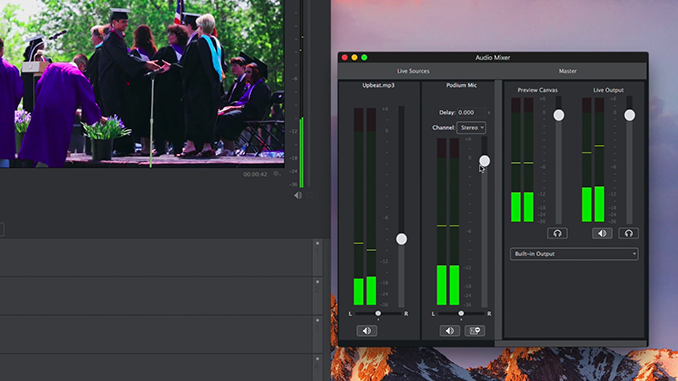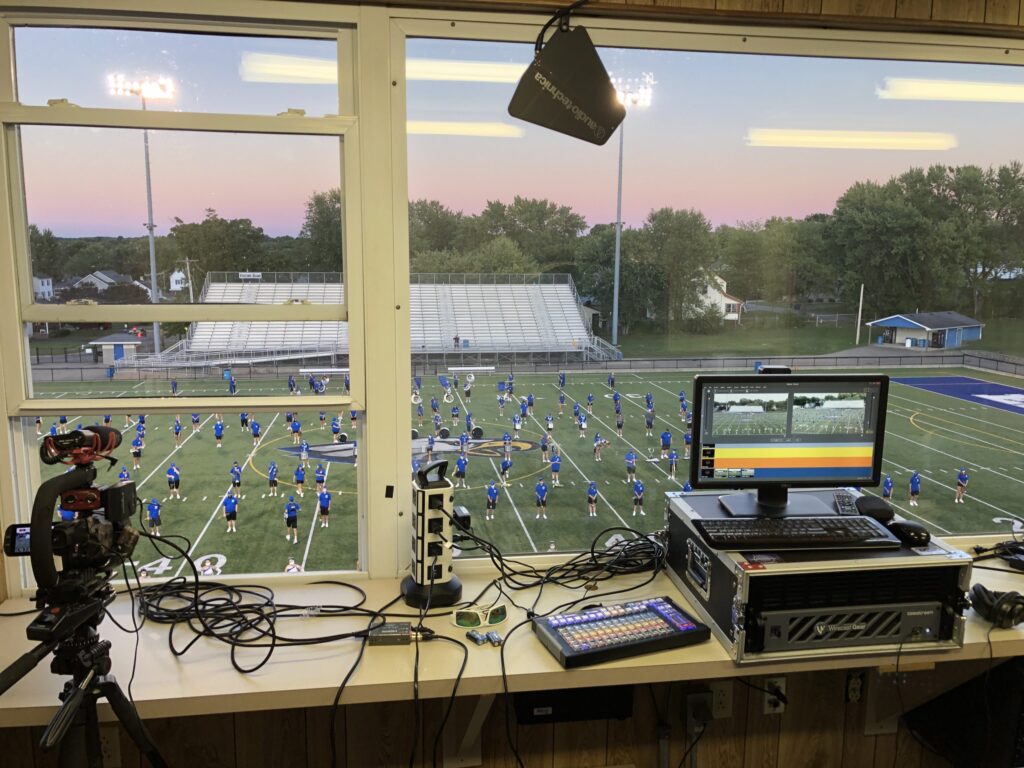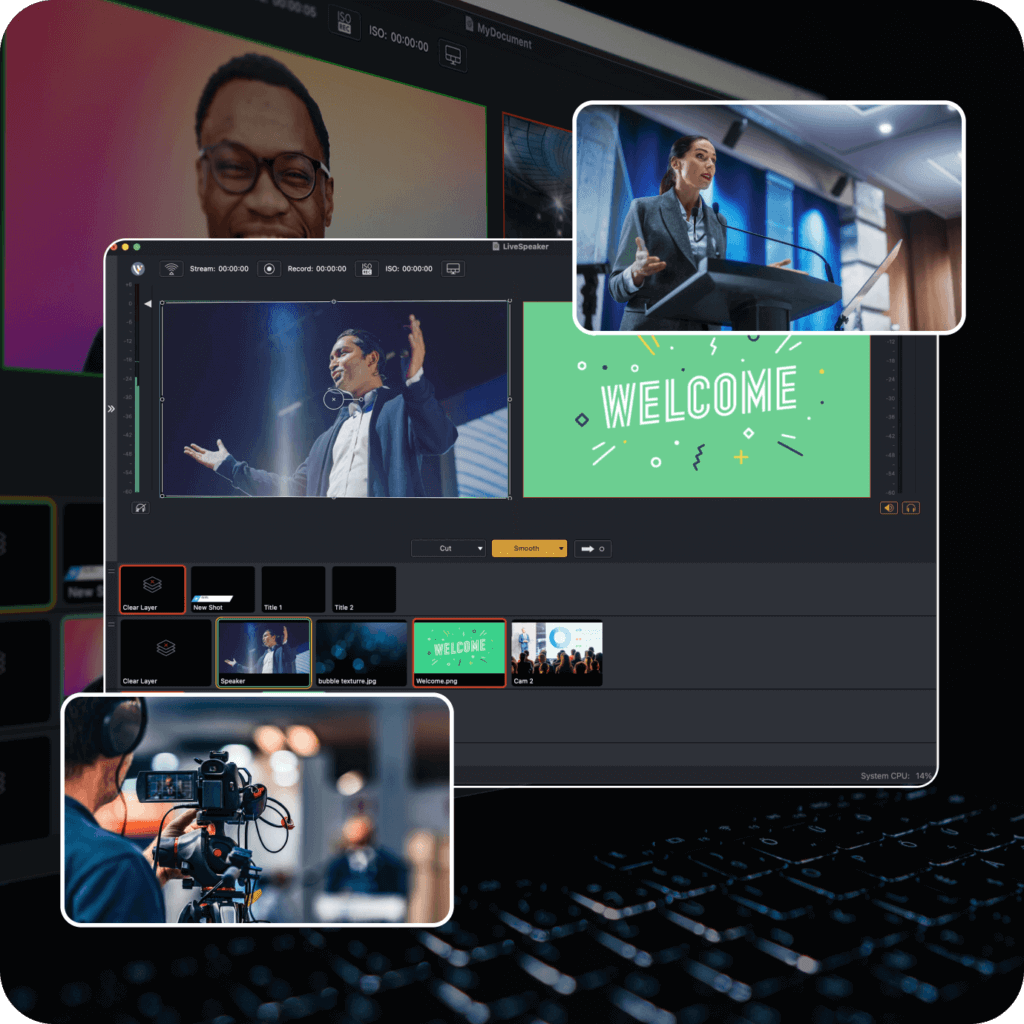Someone once said “Good video with bad audio is worthless, but bad video with good audio still works.” I’m paraphrasing here, but it’s so true. One reason that Youtube originally thrived, much to the dismay of broadcast engineers, was that the audio was pretty good, even though the early video was often fuzzy, blocky and off-color. It was acceptable because the audio sounded decent. There’s nothing worse than noisy, hollow or distant audio on a beautiful video clip.

Let’s make sure that doesn’t happen with your webcast.
This is the first part in a three part series on audio for our new Wirecast blog. I’ll be covering different aspects of how to create high quality audio for your Wirecasts, so let’s get started.
Here’s your first question: “What will my webcast sound like on the device that most of my audience will hear it on?”. This is called the “output” device. Of couse, we all want our webcasts to have THX-quality sound and hear “wow!” when it’s played back for our audience but I’d say that’s a little over the top. Still, you can make sure the audio in your webcast sounds professional on your target device: clear and clean with resonant lows, solid mid-ranges and crisp highs, free of clipping and artifacts. To make sure that happens, you need do a few things.
The first step to producing good sound? Get the right output device. Are you listening with speakers or headphones? It makes a huge difference and can really “color” what you hear, to the point of distraction. By color I mean influence what adjustments you make to your audio, or don’t make. I speak from experience. I once authored a DVD using less than stellar speakers. Guess what? The first time I heard it on a regular TV set, it sounded tinny and horrible!
So for listening and editing your webcast, don’t use your standard computer or laptop speakers, or the common desktop 2.1 setup with a subwoofer and two small high frequency speakers. This is not a good way to get high quality sound, because the speakers are not designed for full range “reference” based listening. They are fine for music playback, or just listening to speech, but to really dial it in, you really need to invest in some good quality reference monitors, which will probably cost between $100 and $300 a pair.

Everyone makes some good monitor or studio speakers, but some mid-priced monitors like these from M-Audio will work just fine. Keep your eyes out for used monitors, too. I picked up some nice, older JBL monitors for a fraction of the cost of new ones.
As long as we’re on speakers, let’s talk cabling. You need to purchase the massive multi-stranded monster-type cables to get the greatest signal possible, right? Not exactly. If you look it up, you’ll still see lots of debate among audiophiles on the merits of stranded vs. solid core copper cabling. I’m not going there right now, because there are too many variables. But for the best bang for your buck, just go down to your local hardware store and ask the guy for 20 ft (or whatever you need) of standard household solid copper wiring commonly called Romex, in a 2-stranded 14 gauge. For most people and installations, this white covered, inexpensive cable will work exceptionally well and is a fraction of the cost of getting the expensive stuff at a home theater or electronics retailer.
Or if speakers won’t work due to space or budget limitations, you can also get some high quality, professional monitoring headphones like the Sennheiser Pro 280HD for less than $100. These are “occlusive” headphones, which fit over your ear and block out other noises and have excellent frequency response. I’ve also heard good things about Sony studio-quality “cans” like these Sony MDR-V6 headphones. This is especially important if your audience is mostly mp3, iPhone or iPod Touch users who will be listening via headphones or ear buds anyway.


Which brings me to how you ought to be thinking about your whole project: your target audience. Who is the target? What will they be listening on? A laptop, mobile device, or full home theater setup? If you know or at least have a pretty good idea, that can really help you figure out how to craft your audio so it’s the clearest possible, and is the best reflection of your productions. Different devices can reproduce your sound differently, so at least do a final check on a variety of output devices to check your work.
How about you? Do you have a favorite setup or workflow for making sure your audio sounds tip-top? Feel free to add your two cents below.
Next time: Part 2: Microphones 101





